CORAL species are listed alphabetically.
All identifications are with reference to Jen Vernon and Mary Stafford-Smith (Corals of the World, Volumes 1 to 3, published in 2000 by Australian Institute of Marine Science) and are considered provisional unless otherwise noted.
GENUS ACROPORA
Acropora pulchra
Axial corallites on branch ends/radial corallites scale-like/radial corallites of mixed sizes/radial corallites small [working from taxonomic key]
Photographed at Beige Reef, which fringes the north facing bay at Stone Island, coordinates (-20.030797, 148.288922) on 27th August 2019.
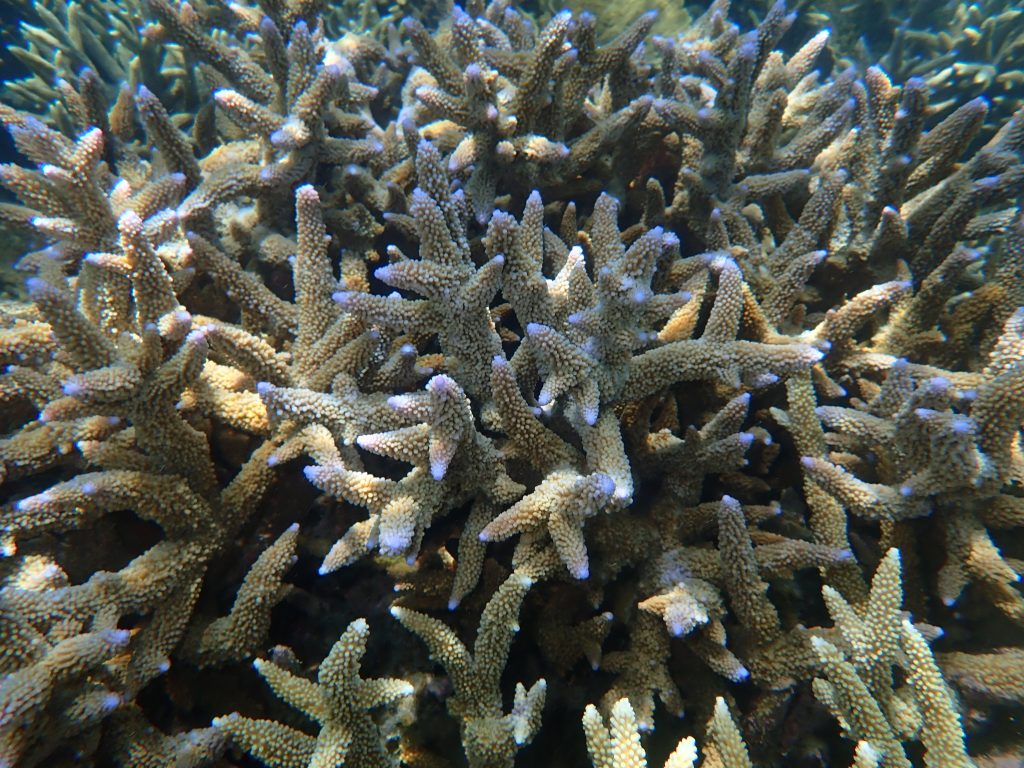
This species is described as:
“Pale to dark brown or blue, often with pale blue tips…
“Usually uncommon, but may be a dominant species…
“Colonies are arborescent with cylindrical branches but may be corymbose…
“May form stands more than 5 metres across…

“Branches are smaller than those of the large stag horn Acropora species…
“Radial corallites are of mixed sizes, with projecting lower lips…
(Volume 1, page 344).

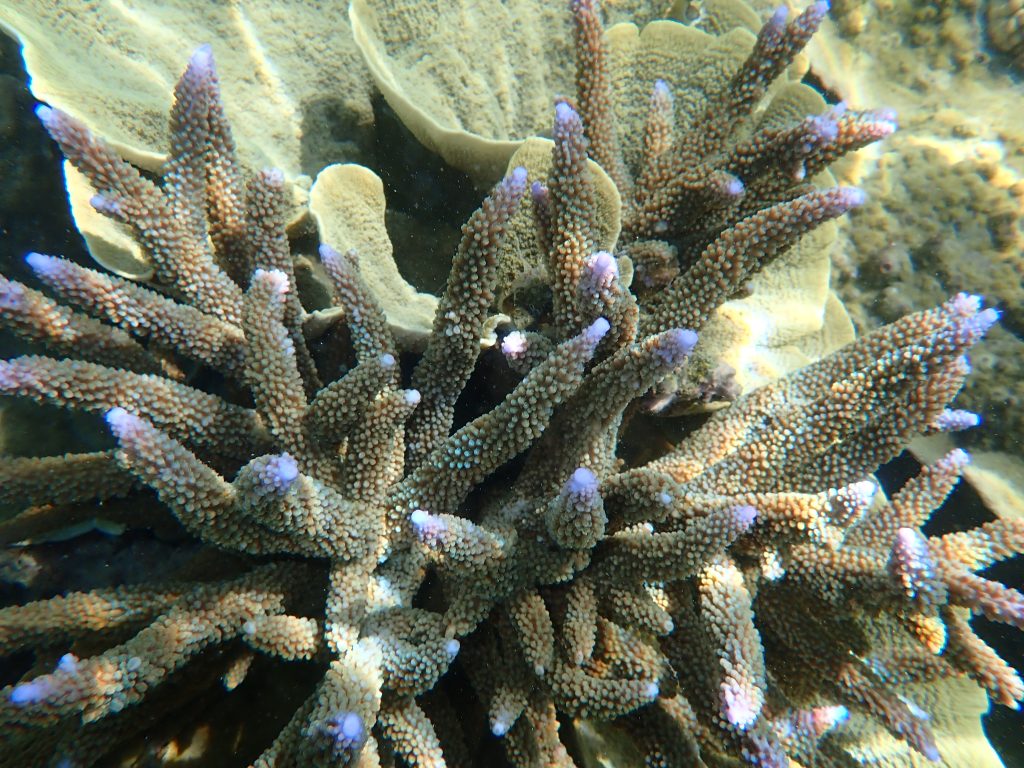
This species, with white and purple axial corallites that are fluorescent, was a dominant species at this reef on 27th August 2019.
GENUS TURBINARIA
Turbinaria mesenterina
Colony not encrusting/fronds not composed of fused corallites/corallites less than 4 mm diameter/fronds contorted [working from taxonomic key]
Photographed at Beige Reef, which fringes the north facing bay at Stone Island, coordinates (-20.030797, 148.288922) on 27th August 2019.

This species is described as:
“Common…
“May be a dominant species in shallow turbid environments…
“Usually grey-green or grey-brown…
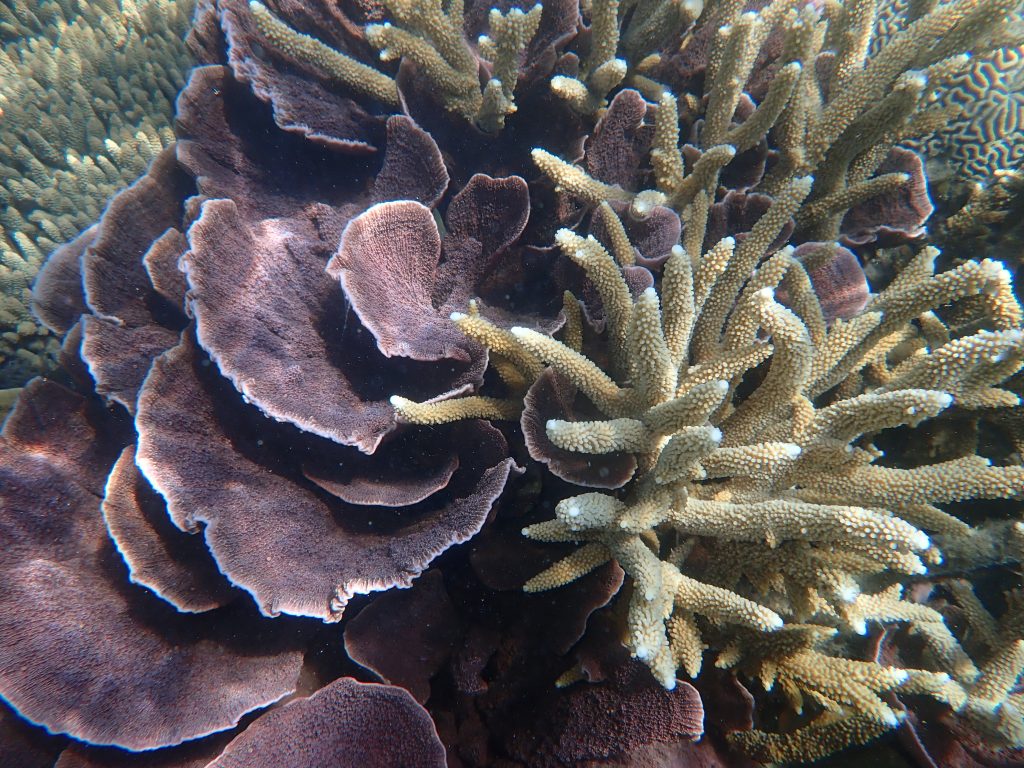
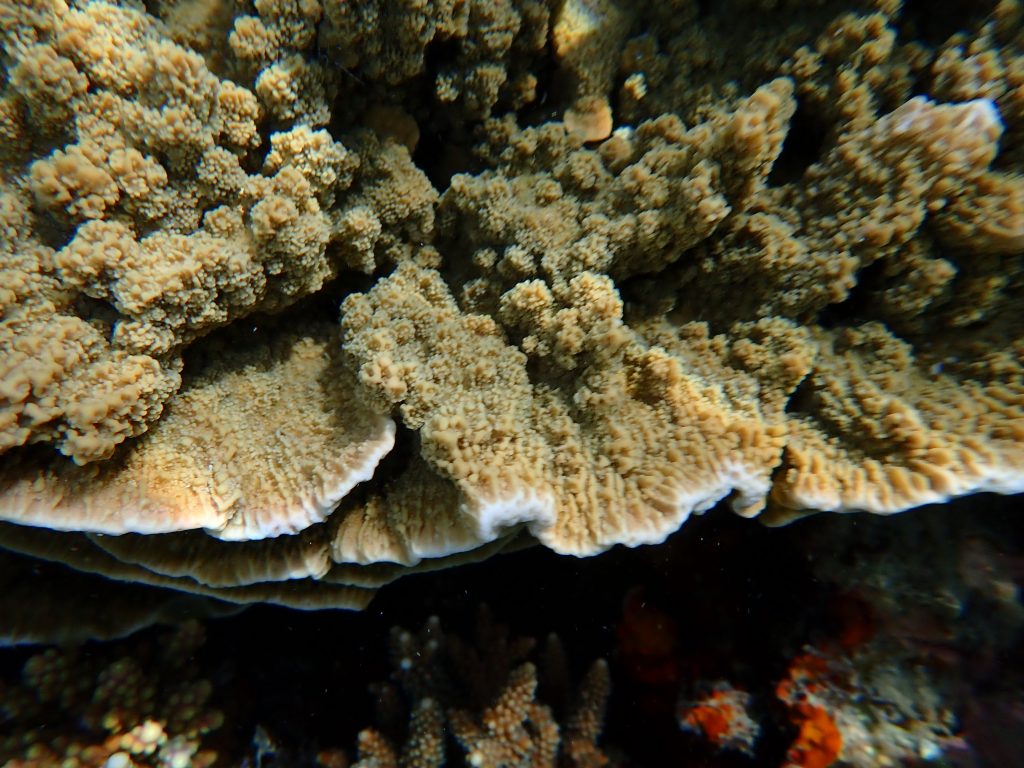
“Colonies are composed of unifacial laminae which are highly contorted and fused when growing in subtidal habitats, are upright or tiered when on upper reef slopes and are horizontal in deeper water. This variation is determined by light availability…
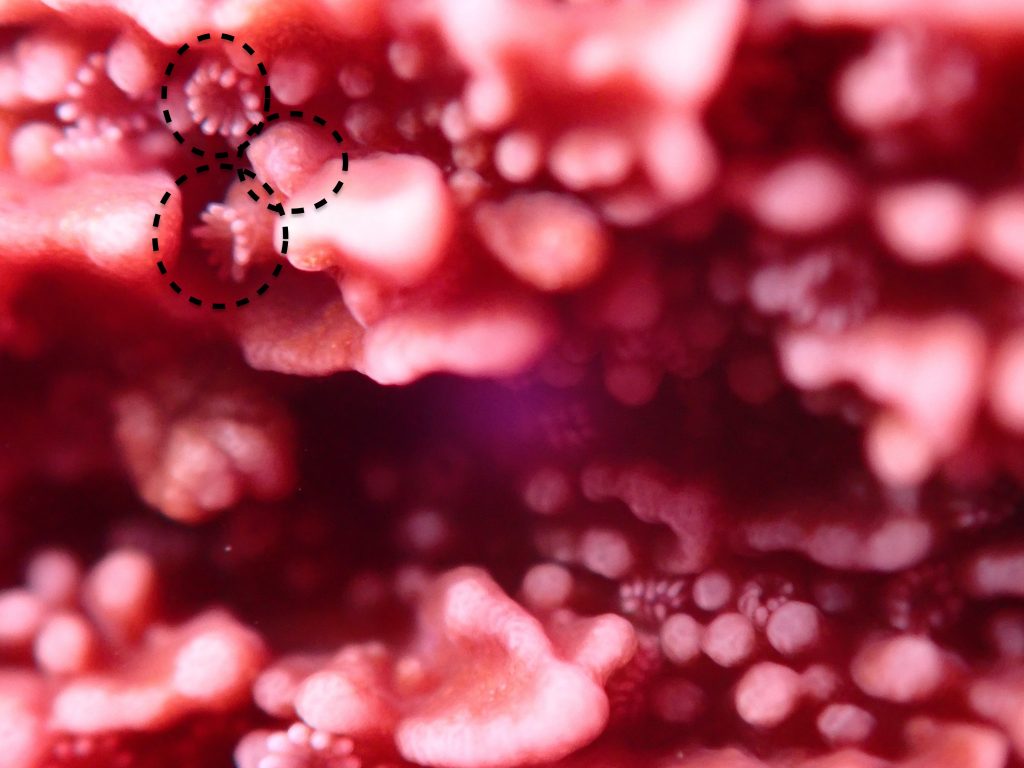

“Corallites are crowded, slightly exert and average 2.5 mm diameter…
(Volume 2, page 394).
Note: The tentacles in photograph numbers -0223 and -0217 (above) only superficially resemble the tentacles as shown in Vernon and Stafford-Smith (page 395) and Kelley (2016, Indo Pacific Coral Finder, 3rd Edition, BYOGUIDES). In the two publications the tentacles in the photographs are translucent and more pointed.
In order to compare the structure of the septo-costae/inner wall of the corallite as shown on page 394 of Vernon and Stafford-Smith (2000) with the specimens as photographed at Beige Reef, Stone Island, it would be necessary to first remove the polyps and tentacles?

 Jennifer Marohasy BSc PhD is a critical thinker with expertise in the scientific method.
Jennifer Marohasy BSc PhD is a critical thinker with expertise in the scientific method.
